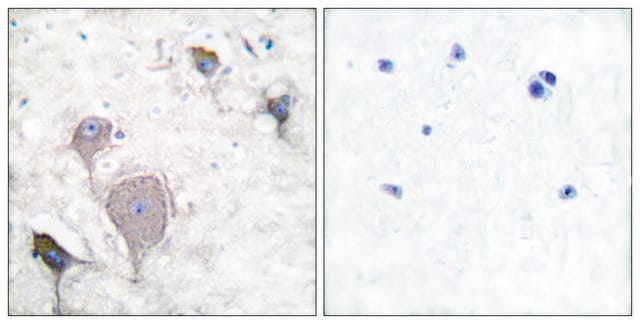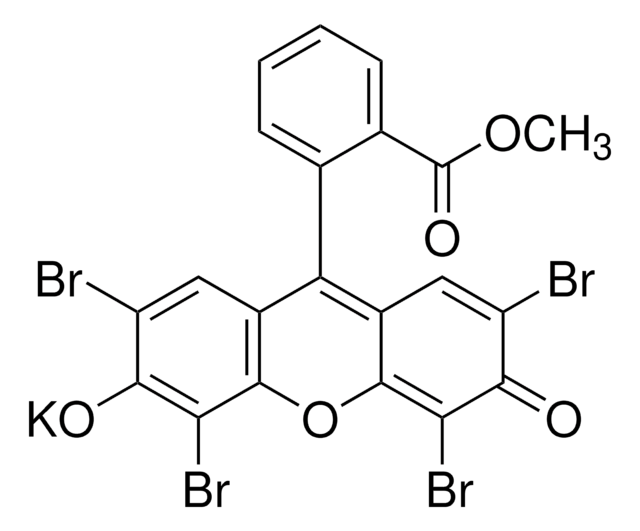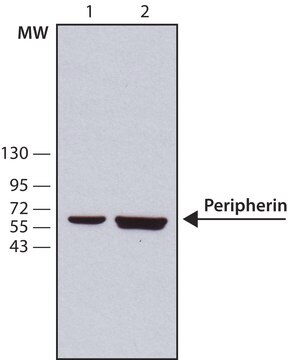MAB1527
Anti-Peripherin Antibody, clone 8G2
culture supernatant, clone 8G2, Chemicon®
Sinónimos:
Anti-NEF4, Anti-PRPH1
About This Item
Productos recomendados
biological source
mouse
Quality Level
100
300
antibody form
culture supernatant
antibody product type
primary antibodies
clone
8G2, monoclonal
species reactivity
pig, rat, bovine, human, mouse
manufacturer/tradename
Chemicon®
technique(s)
immunocytochemistry: suitable
immunohistochemistry: suitable
western blot: suitable
isotype
IgG
suitability
not suitable for immunohistochemistry (Paraffin)
NCBI accession no.
UniProt accession no.
shipped in
dry ice
target post-translational modification
unmodified
Gene Information
human ... PRPH2(5961)
General description
Specificity
Immunogen
Application
Immunohistochemisty: light PFA fixation is necessary as 8G2 is sensitive to heavy formalin fixation. Antigen recovery is enhanced with 0.1% triton in the block only. 1:25-1:200
Immunoblotting: The antibody is clean and specific for the expected 57kDa band on Western blots.
Optimal working dilutions must be determined by end user.
Neuroscience
Sensory & PNS
Neuronal & Glial Markers
Target description
Physical form
Storage and Stability
Analysis Note
Rat sensory neurons, rat spinal cord homogenate and peripheral nerve homogenate
Other Notes
Legal Information
Disclaimer
¿No encuentra el producto adecuado?
Pruebe nuestro Herramienta de selección de productos.
Optional
Storage Class
11 - Combustible Solids
wgk_germany
WGK 3
flash_point_f
Not applicable
flash_point_c
Not applicable
Certificados de análisis (COA)
Busque Certificados de análisis (COA) introduciendo el número de lote del producto. Los números de lote se encuentran en la etiqueta del producto después de las palabras «Lot» o «Batch»
¿Ya tiene este producto?
Encuentre la documentación para los productos que ha comprado recientemente en la Biblioteca de documentos.
Nuestro equipo de científicos tiene experiencia en todas las áreas de investigación: Ciencias de la vida, Ciencia de los materiales, Síntesis química, Cromatografía, Analítica y muchas otras.
Póngase en contacto con el Servicio técnico






